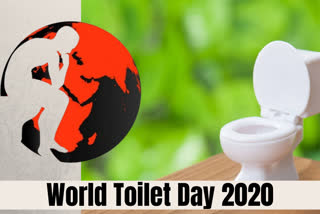Hyderabad:Today the world commemorates World Toilet Day (WTD), an annual global event organised by UN-Water to raise awareness of the crucial role that sanitation plays in reducing disease and creating healthier communities.
The UN chooses a World Toilet Day theme every year, to continue raising awareness of the need for proper sanitation facilities. Some of the past themes include Wastewater, Toilets and Jobs, Toilets and Nutrition, Equality and Dignity.
- What is World Toilet Day?
World Toilet Day is a day for action which is celebrated globally on November 19. World Toilet Day is a day to promote awareness about all people who do not have access to a toilet – despite the human right to water and sanitation.
World Toilet Day was enacted by the World Toilet Organization in 2001 and after Twelve years since then, in 2013, the UN General Assembly declared World Toilet Day an official UN day.
Despite access to proper sanitation being declared a basic right, one in three people across the world, so some 2.5 billion people in total, don't have regular access to a restroom.
Additionally, even amongst people who do have such access, unclean and unsafe toilets pose problems of their own, including contributing towards the spread of diseases like cholera, typhoid and hepatitis—in some parts of Africa, diarrhoea is one among the most child-killers.
- What is the Significance of World Toilet Day?
Without the World Toilet Day, it would be difficult to know how urgent the issue of sanitation is. In 2014, World Toilet Day India celebrations revealed that more than 60.4% of the population didn’t have access to toilets. This is shocking since the lack of proper sanitation and hygiene practices is causing deaths, and this is something that needs urgent attention. This day raises awareness and breaks the taboo in our society of talking about toilets. It is also a time to celebrate modern innovation in the sanitation field. From the first flush toilet, self-cleaning toilets to eco-friendly plumbing advancement that has reduced the amount of water and dollars used every year.
Universal access to sanitation in households and schools is essential in:
- Reduction of diseases
- Improved nutritional status of children
- Enhancement of safety, and well-being of children
- Growth of educational prospects, especially for women and girls
- How to Celebrate World Toilet Day
Every year, millions of people promote the World Toilet Day via online petitions, campaigns and getting involved in World Toilet Day events held worldwide. The most common observance for this day is via social media where the hashtags #worldtoiletday, #ToiletAccessIsARight, #WeCantWait are popularly used to spread awareness.
- World Toilet Day- Interesting Fact
